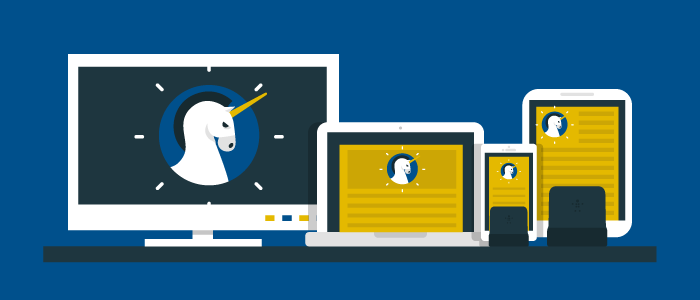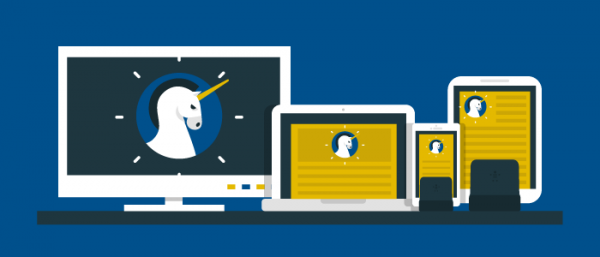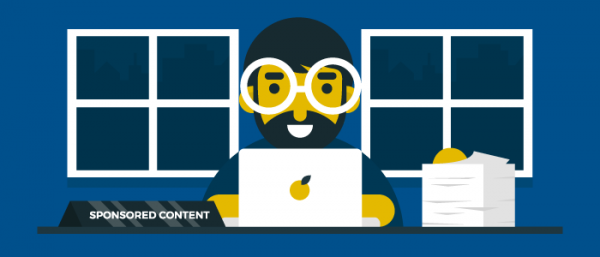
Using multi-screen advertising psychology to build better sponsorship packages

Three years ago, Nielsen published an article that predicted “multi-screen [advertising] campaigns will be very important in three years.” Multi-screen advertising, which is a more common term in television advertising, refers to delivering the same, or a similar ad, on many devices around the same time.

It requires developing a campaign that uses the same message, branding, colors, tone, and humor delivered across all platforms so the ad becomes recognizable to the end-user maybe not in the first, second, or even third instance, but becomes ingrained in their memory as something familiar and likable over time.
Fast-forward to present day, where Heather Andrew, Neuro-Insight CEO, presents a magazine study that showed there was a “beneficial effect of consistent branding in creating a ‘brainstate’ that was uniform across platforms, and this effect was driven by the overwhelming strength of the magazine brand.”
[text_ad]
Participants in this study and others showed that consistent messaging was most important and that memory plays the most important factor.
“For an ad (or any piece of communication) to be memorable, and so to stand a chance of influencing behaviour, our brains need to allow it to become encoded into our long term memory. Many factors are involved in memory, but there are three key drivers that can boost the effectiveness of a campaign creative – emotion, narrative and personal relevance.”
At Mequoda, we believe multiplatform publishers can get the most multi-screen advertising benefits, and the highest sponsorship yield by selling multiplatform advertising packages that are built on the principles of scarcity, exclusivity and alignment, and include many, or all, of the below custom content, across many screens.

Here are the content-centric advertising elements we suggest are included in most advertising packages:
- Native magazine sponsored articles
- Sponsored content distribution
- Portal and email extras
- Email newsletter sponsorship – banners and text ads
- Audited magazine display ads
- Social media campaigns
Andrew notes, “If a piece of advertising is a good fit with the context in which it is being seen, its impact is all the greater. So a fashion ad in a fashion magazine is likely to attract more attention than the same fashion ad in, say, a national newspaper, even when it’s seen by the same person. Consumers’ openness to magazine content is something quite unique in the media world. Our brains are wired to reject messages that are felt to be too intrusive.”
This is why native magazine advertising, although controversial when not FTC-compliant, is so effective for advertisers, and thus, for publishers. You have all the editorial and design resources at your fingertips to align custom content, including editorial, to your niche. An article on fashion in your fashion magazine isn’t going to offput your customers, or theirs.
How to create multi-screen advertising content

At Mequoda, we believe the best sponsored content takes the same form and qualities as your original premium content. The content should provide value for the reader at the same time as it creates a positive perception of the sponsor. We live with one simple watch phrase that can help keep you out of trouble: Sponsored content should be something your publication would have published regardless of whether there was a sponsor. If it doesn’t pass that simple test, you shouldn’t publish it.
The good news for publishers is that creating this kind of content isn’t easy for a sponsor. Most sponsors can’t resist the opportunity to write promotional ad copy, instead of content that will really engage readers. That’s why we recommend that the content be generated by someone you trust, who also knows your audience – you! And even though you will be the ones generating the content, it will still be labeled as “Sponsored Content.” Most readers won’t care if the content is sponsored or not – as long as it’s good!
Mequoda recommends using your own editorial resources – for a price – to create copy you know works for your audience and meets the needs of the sponsor. The best examples of these partnerships begin with a conversation where the publisher asks questions about what the sponsor wants to accomplish – and listens more than talks. After taking the sponsor’s needs into consideration, the publisher can come back with a specific content proposal that satisfies the sponsor and meets the publisher’s need for quality content.
The importance of this agreement can’t be overstated. If it doesn’t help your audience, or if the content doesn’t meet the sponsor’s needs, no one will be happy. Make sure you communicate early and often with the sponsor to ensure everyone is informed of what the other is doing, and get buy-in from the sponsor for the content plan.
If your advertiser is running a major nationwide commercial, it’s in your best interest, and theirs, to tackle all of the above using the same persona, theme, colors, and voice across all multi-screen advertising channels. If consumers are more likely to enjoy advertisements when they feel like they’ve been following the story across different platforms, then it’s a benefit to you, the advertiser, and the consumer. What are your thoughts?


